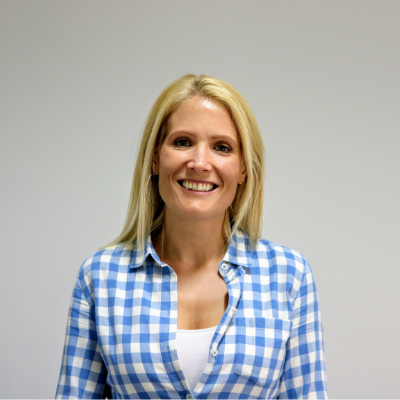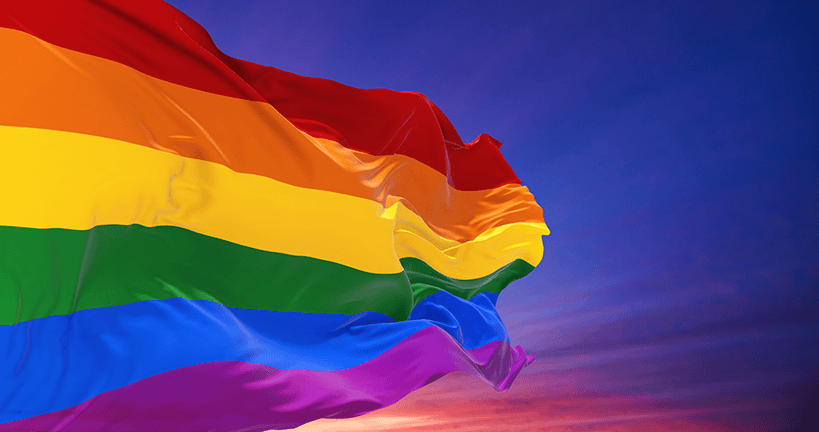
Flying the Flag for Diversity
This LGBTQIAS2+ Pride Month, many companies - including Amoria Bond – are displaying rainbow variations of their logos across their websites, social media accounts and other marketing materials, to show allyship, inclusion and support for the community. The number of businesses that take part in this trend makes this a powerful signifier of a changing, more inclusive world, yet it also draws attention to the very real fact that there is still work to be done.
But it also raises another important question that doesn’t get talked about enough. What happens when the rainbows disappear on July 1st?
How many companies fall into the trap of annual tick-box ‘rainbow-wash’ – however well-intentioned?
Sadly, the reality is that it’s a lot. Recent research by the Trevor Project reveals over one third of LGBTQ+s experience workplace discrimination, and the numbers rise significantly to 61% for transgender workers.
That LGBTQ+ bias exists is inarguable, and it’s stopping employees from being their authentic selves at work. Many LGBTQ+ workers are exhausted from having to hide their identity in the workplace - the HRC Foundation found 46% of LGBTQ workers report being closeted, one in five reported having been told (or had co-workers imply) they should dress in a more feminine or masculine manner, and over half (53%) reported hearing ‘jokes’ about lesbian or gay people.
Demonstrating support for the LGBTQ+ community is important in the fight for talent because inclusivity matters to both LGBTQ+ and non-LGBTQ+ applicants alike. McKinsey’s ‘Lived Discrimination’ research revealed that almost 40% had rejected a job offer or decided not to pursue a position because they felt that the hiring company was not inclusive.
So, what more can companies do to ensure their brand authentically reflects they are welcoming and inclusive for LGBTQ+ workers?
I’ll start by explaining why we choose to keep our virtual rainbow flag flying from Pride month until after Manchester Pride (which is the 26th to 29th August this year). It’s something we’ve done for the last two years – and we always get asked about it. When people think we’ve forgotten to take it down, we explain to them that it’s a deliberate, conscious decision that we’ve made for a few good reasons. First and foremost, as a Manchester-born business, Manchester Pride is a flagship event in our inclusion calendar, and it’s one we celebrate in style!
Each year we live-stream our hugely popular ‘Pride Warm-Up’ live DJ-set around the world into every office across the Amoria Bond Group, every remote-working employee’s home, and we make it freely available to anyone across our network. Why? Because an inclusive and diverse culture has to be lived, breathed and celebrated!
It’s more than just a gesture, not least because it’s our Founders who DJ (and yes, they’re damn good at it too… check out last year’s set here), and that’s important because it shows commitment to LGBTQ+ inclusion comes from the very top of our organisation, and we don’t hide that, including in those regions we operate where homosexuality remains illegal.
Culture is key to attracting diverse talent.
75% of candidates research a company’s brand and reputation before applying for a job. Alongside great training and development opportunities, applicants want to work in an inclusive company with demonstrable D&I credentials. I see this first hand at Amoria Bond, where applicants regularly cite our action-led D&I initiatives and CSR commitments as a deciding factor in wanting to work with us.
The best employer brand in the world can't mask reality once a candidate's through the door though, so be authentic and honest about where you are as an organisation.
Is there LGBTQ+ bias in your hiring and selection processes?
It takes time and considerable effort to remove unconscious bias from recruitment processes, interview questions, and even on-boarding support, so is it worth the effort? Researchers estimate that current STEM industries have lost at least 120,000 viable candidates due to the cumulative effects of anti-LGBTQ bias. LGBTQ+ respondents in McKinsey’s survey were 1.4 times more likely to feel very included if their employers had organisation-wide targets for recruiting diverse employees, advancing them, or both.
Blind CV screening, diverse hiring panels, and situational questions in interviews are effective ways to minimise bias, alongside integrating tools such as Enterlo, Connectifier, Unity, Text.io, Picnic, Gamification Summit and BeApplied.
You can invest in broadening the diversity of your talent pipeline too, and software can again support you here (WebCrawler is a great one). But if you’re really serious about widening your talent-pools, then you need to engage expert recruitment consultancy partners who share your values and D&I commitments.
Why don’t affected workers report LGBTQ+ discrimination and bullying?
A staggering one in ten black, Asian and minority ethnic LGBTQ+ employees have been physically attacked by customers or colleagues in the last year, and 55% of trans workers have experienced conflict over a 12-month period. At least 50% of these were unresolved. Workplace aggression against LGBTQ+ colleagues remains a very real issue in many companies.
The top reason given in Stonewall’s study for employees not reporting negative comments heard about LGBTQ+ people to a supervisor or HR is because they didn’t think anything would be done about it. Simply reviewing your grievance and disciplinary policies to make sure they are fit for purpose and protect LGBTQ+ workers is a simple step companies can easily make.
What else can we do to make LGBTQ+ employees feel included?
There is a raft of freely available advice for being a non-binary ally, including using pronouns in emails and when introducing yourself, using inclusive terms like ‘everybody’ rather than ‘ladies and gentlemen’, and – where preferred pronouns are unknown – to use ‘they’ rather than ‘she’ or ‘he’.
Non-binary people don’t currently have legal recognition in many countries, including the UK, but workplaces can easily make their own accommodations, such as by giving people other options than ‘male’ or ‘female’ on company forms and embedding specific LGBTQ+ inclusion statements in employment policies and published D&I commitments.
Other ways to improve your inclusion can be established by answering these questions:
• Does your business have inclusive family and leave policies?
• What about D&I staff training?
• Do you provide inclusion and diversity support and resources?
• Do you have inclusion champions?
• Employee Resource Groups?
• And networks?
• How about facilitating open and safe conversations?
Run by our D&I Committee and Inclusion Advocates, our ‘Let’s Talk’ sessions in Manchester provide a brilliant forum for employees to discuss a whole range of issues and subjects under the safety of ‘Chatham House’ rules.
Take it slowly and do it properly
LGBTQ+ allyship cannot be created overnight, it can’t be faked, and it won't always be easy and comfortable. But I encourage you to consider the suggestions and ideas I’ve shared here – not just because it’s the right thing to do, but because it will help you thrive and succeed as a business. Research undertaken in Finland shows companies embracing LGBTQ+ friendly policies tend to be more profitable and have higher stock market evaluations, all attributed to higher employee retention and satisfaction.
The rainbow flag has long been seen as a physical representation of allyship with LGBTQ+ colleagues, clients, and community. But the last year or two has rightly shifted the focus, the onus, and the responsibility to honestly question whether we are doing ‘enough’, and what even ‘enough’ might be.
I’m proud of working at Amoria Bond where everyone is welcomed and included for who they are. We’re not perfect, absolutely, but we’re trying hard, we’re working, and listening, and learning, then flexing and adapting. And really that’s all most employees are looking for – a genuine and demonstrable commitment to creating an inclusive workplace where everyone can be their authentic self.
For me personally, the rainbow flag remains an important symbol of inclusivity and welcome, but it MUST permeate deeper than just an organisation’s logo and brand. If it doesn’t, don’t fly it at all.
If you’re hiring and want access to diverse global talent-pools that can help your business thrive, or you’re looking for your next role as in an inclusive, value-led company, contact us today.





